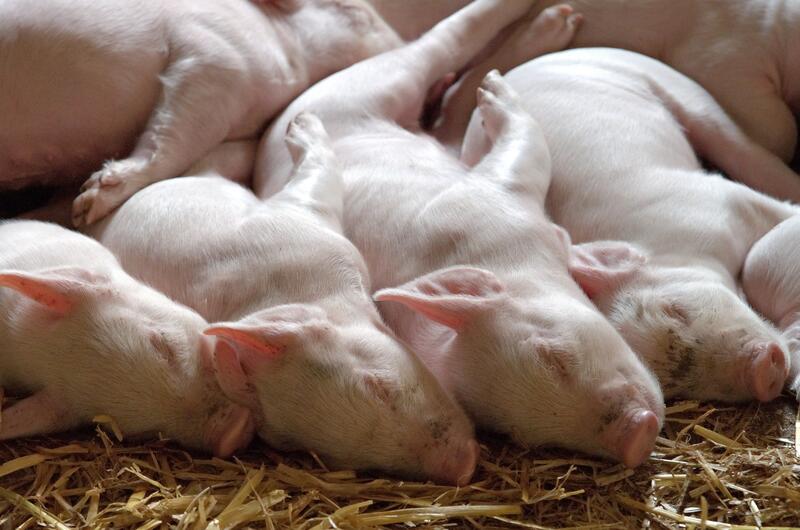Toward a Carbon-Free Raising of swine/pigs: Exploring Decarbonization Strategies
This article discusses decarbonization strategies for the raising of swine and pigs, aiming to reduce carbon emissions and promote sustainable agriculture practices.

Decarbonisation refers to the process of reducing or eliminating carbon dioxide emissions from various sectors of the economy. The raising of swine or pigs is one of the sectors that contribute to carbon emissions. The sector plays a crucial role in the global food system, providing meat and other products to consumers worldwide. However, the sector has significant environmental impacts, including greenhouse gas emissions, which contribute to climate change. Therefore, decarbonisation in the raising of swine or pigs sector is essential to mitigate the impacts of climate change and ensure sustainable food production. This article explores the concept of decarbonisation in the raising of swine or pigs sector, its importance, main sources of carbon emissions, strategies to reduce emissions, challenges facing decarbonisation, and implications of decarbonisation for the sector.
What is decarbonisation in the raising of swine/pigs sector, and why is it important?
Decarbonisation in the raising of swine or pigs sector refers to reducing or eliminating carbon dioxide emissions associated with the production of pork and other pig products. The sector is a significant contributor to greenhouse gas emissions, mainly through the production of animal feed, manure management, and energy use. Therefore, decarbonisation is essential to mitigate the impacts of climate change and ensure the sustainability of the sector. The raising of swine or pigs sector is critical to the global food system, and any disruption in its production could have significant implications for food security and the economy. Therefore, decarbonisation is vital to ensure the sector's long-term viability and sustainability.
What are the main sources of carbon emissions in the raising of swine/pigs sector?
The raising of swine or pigs sector contributes to carbon emissions through various activities, including feed production, manure management, and energy use. The main sources of carbon emissions in the sector include:
- Feed production: The production of animal feed, especially soybean and corn, is a significant contributor to carbon emissions. The production of these crops involves the use of fossil fuels, which emit carbon dioxide. Additionally, the use of fertilizers and pesticides in crop production also contributes to emissions.
- Manure management: The management of manure in the raising of swine or pigs sector is another significant source of carbon emissions. The decomposition of manure produces methane, a potent greenhouse gas that contributes to climate change.
- Energy use: The raising of swine or pigs sector requires energy for heating, lighting, ventilation, and other activities. The use of fossil fuels to generate energy contributes to carbon emissions.
How can we reduce carbon emissions in the raising of swine/pigs sector?
Reducing carbon emissions in the raising of swine or pigs sector requires a comprehensive approach that addresses the main sources of emissions. Some of the strategies that can be employed to reduce emissions include:
- Sustainable feed production: The production of animal feed can be made more sustainable by using alternative feed sources, such as algae, insects, and food waste. Additionally, the use of organic fertilizers and pesticides can reduce emissions associated with feed production.
- Improved manure management: The management of manure can be improved by using anaerobic digesters to capture methane and convert it into energy. Additionally, the use of manure as a fertilizer can reduce the need for synthetic fertilizers, which emit carbon dioxide during production.
- Renewable energy: The use of renewable energy, such as solar and wind power, can reduce the sector's reliance on fossil fuels and associated emissions.
- Improved animal health: Improving animal health can reduce the need for antibiotics, which contribute to emissions through their production and use.
- Efficient production: Improving production efficiency, such as reducing feed waste and improving genetics, can reduce emissions associated with feed production and animal waste.
What are the challenges facing decarbonisation in the raising of swine/pigs sector?
Decarbonisation in the raising of swine or pigs sector faces several challenges, including:
- Cost: Implementing decarbonisation strategies can be costly, especially for small-scale producers who may not have the resources to invest in sustainable technologies.
- Lack of awareness: Many producers may not be aware of the environmental impacts of their activities or the benefits of decarbonisation.
- Regulatory barriers: Regulations and policies may not support decarbonisation efforts, making it difficult for producers to adopt sustainable practices.
- Infrastructure: The lack of infrastructure, such as anaerobic digesters and renewable energy systems, can hinder decarbonisation efforts.
- Consumer demand: Consumer demand for sustainable pork products may not be sufficient to incentivize producers to adopt decarbonisation strategies.
What are the implications of decarbonisation for the raising of swine/pigs sector?
Decarbonisation in the raising of swine or pigs sector has several implications, including:
- Improved sustainability: Decarbonisation can improve the sustainability of the sector by reducing its environmental impacts and ensuring its long-term viability.
- Increased efficiency: Decarbonisation strategies, such as improved production efficiency, can increase profitability and competitiveness in the sector.
- Improved public health: Decarbonisation can improve public health by reducing the use of antibiotics and other chemicals in the sector.
- Improved animal welfare: Decarbonisation can improve animal welfare by reducing the need for antibiotics and improving living conditions.
Conclusion
Decarbonisation in the raising of swine or pigs sector is essential to mitigate the impacts of climate change and ensure the sustainability of the sector. The sector is a significant contributor to greenhouse gas emissions, mainly through feed production, manure management, and energy use. Strategies to reduce emissions include sustainable feed production, improved manure management, renewable energy, improved animal health, and efficient production. However, decarbonisation faces several challenges, including cost, lack of awareness, regulatory barriers, infrastructure, and consumer demand. The implications of decarbonisation for the sector include improved sustainability, increased efficiency, improved public health, and improved animal welfare. Therefore, there is a need for concerted efforts from all stakeholders to promote decarbonisation in the raising of swine or pigs sector.